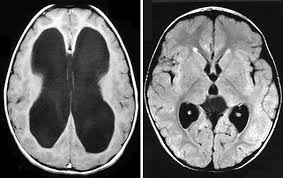
Hydrocephalus
Hydrocephalus is the buildup of too much cerebrospinal fluid (CSF) in the brain. CFS is normally located in the cavities of the brain called ventricles. When this fluid increases, the sizes of the ventricles increase putting pressure on the brain. CSF normally flows through the ventricles and bathes the brain and spine. The pressure of too much CSF can damage brain tissues causing impairment in brain function. Hydrocephalus may occur at any age, but it is more frequently observed among infants and adults over 60. A very special type of hydrocephalus called normal pressure hydrocephalus may occur in old people, the characteristics and causes of this condition will be described below. Different therapies are required to manage symptoms resulting from hydrocephalus.
Causes of Hydrocephalus
Hydrocephalus may result from inherited anomalies or developmental disorders, which block the normal flow of CSF. Hydrocephalus can develop as part of another condition. These are the more common causes of hydrocephalus:
Congenital hydrocephalus
- Aqueductal stenosis. It is the most common cause of congenital hydrocephalus. For some reason, the aqueduct of Sylvius (located between the third and fourth ventricle) is narrowed or blocked.
- Neural tube defects. Neural tube defects (myelomeningocele, spina bifida) are another common cause of hydrocephalus in infants.
- Arachnoid cysts. Arachnoid cysts are filled with fluid and may block the normal pathways of CSF, causing hydrocephalus.
- Dandy-Walker syndrome. In these cases, the fourth ventricle is enlarged because its outlets are partially or completely blocked. This syndrome may be associated with abnormal development of other parts of the brain.
- Chiari malformation. In cases of Chiari malformation, the lowest part of the brain is displaced and is lower than normal pushing the spinal cord. This may cause a variety of neurological symptoms
Acquired hydrocephalus
- Meningitis. Meningitis is an inflammation of the membranes of the brain. It is usually caused by a bacterial or viral infection. Meningitis may cause scarring, which obstructed the flow of CSF as it passes through the narrow ventricles and subarachnoid space.
- Head injury. In cases of head trauma, some bleeding may enter the CSF pathways causing inflammation and scarring. Sites of CSF absorption may be blocked causing hydrocephalus.
- Intraventricular hemorrhage. It occurs more frequently in premature newborns. The hemorrhage inside the ventricles may cause scarring, leading to a decrease in the absorption of CSF.
- Brain tumors. Brain tumors may compress and block the flow of CSF, causing hydrocephalus. In children, brain tumor most commonly occurs in the posterior fossa, compressing the fourth ventricle and causing hydrocephalus.
Normal pressure hydrocephalus
Normal pressure hydrocephalus (NPH) is a type of hydrocephalus that usually occurs in older adults. The average age of a person with NPH is over age 60. NPH is different from other types of hydrocephalus in that it develops slowly over time. The drainage of CSF is blocked gradually, and the excess fluid builds up slowly. The slow enlargement of the ventricles means that the fluid pressure in the brain may not be as high as in other types of hydrocephalus. However, the enlarged ventricles still press on the brain and can cause symptoms. Causes of Normal pressure hydrocephalus NPH can occur secondary to head trauma, stroke, infections or brain tumors. In most cases of NPH, the cause is unknown. Symptoms Normal pressure hydrocephalus The functions of the brain most often affected in NPH are those that control the legs, the bladder, and the “cognitive” mental processes such as memory, reasoning, problem-solving, and speaking. This decline in mental processes is known as dementia. Other symptoms include abnormal gait (difficulty walking), inability to hold urine (urinary incontinence), and, occasionally, inability to control the bowels. The dementia symptoms of NPH can be the same as those of Alzheimer’s disease. The walking problems are similar to those of Parkinson’s disease. For this reason, many cases of NPH are misdiagnosed as one of these diseases.
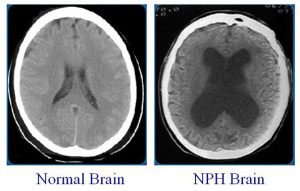
Figure 1. NPH Brain
Diagnosis Normal pressure hydrocephalus
The combination of dementia-like symptoms, walking problems, and urinary problems should alert to the possibility of NPH
Brain imaging tests (CT scan, MRI) will show enlargement of the ventricles in cases of NPH (Figure 1).
Very often, complementary tests are needed to confirm the diagnosis of NPH. The most common test is a lumbar puncture (spinal tap). This procedure involves the removal of CSF from the lower back. When the patient shows improvement after the spinal tap, this indicates that a surgical shunt to drain CSF would be helpful in that person.
Treatment of Hydrocephalus
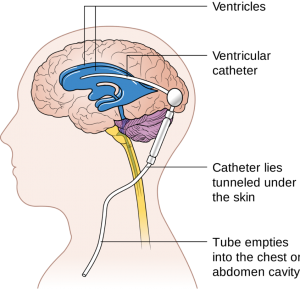
Figure 2. CSF shunt system
Hydrocephalus is most often treated by surgically inserting a shunt system. This system diverts the flow of CSF from the CNS to another area of the body where it can be absorbed as part of the normal circulatory process.
A shunt system consists of the shunt, a catheter, and a valve. One end of the catheter is placed within a ventricle inside the brain and the other end of the catheter is commonly placed within the abdominal cavity. A valve located along the catheter maintains a one-way flow and regulates the rate of CSF flow (Figure 2)
Shunt systems are imperfect devices. Complications may include mechanical failure, infections, obstructions, and the need to lengthen or replace the catheter. Generally, shunt systems require monitoring, and regular medical follow up. When complications occur, subsequent surgery to replace the failed part or the entire shunt system may be needed.
Awesome Doctors for your Neurosurgery Needs
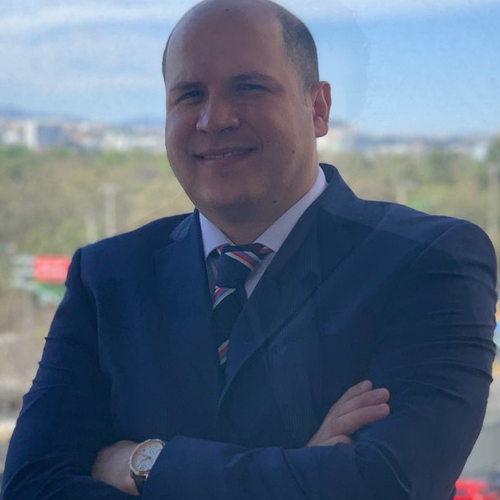
Dr. JJ Ramirez
Neurocirujano
Dr. Ramirez attended medical school at the Universidad Autonoma of Guadalajara School of Medicine in Guadalajara Mexico. Dr. Ramirez performed his Neurosurgery training at the National Institute of Neurology and Neurosurgery in Mexico City
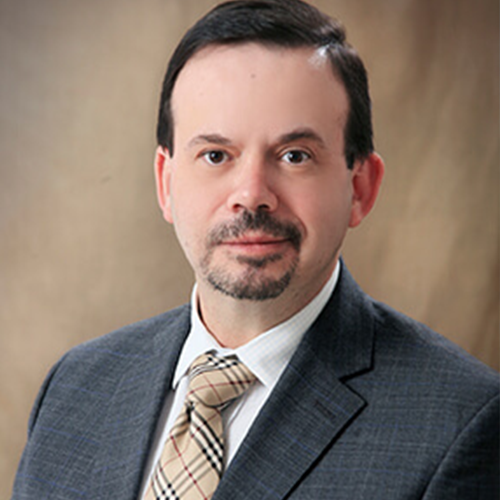
Dr. Ramiro Pérez
Neurosurgeon
Dr. Ramiro Pérez attended medical school at the University of Guadalajara School of Medicine in Guadalajara México. Dr. Pérez performed his Neurosurgery training in Centro Medico Siglo XXI IMSS and has been practicing his specialty for more than 13 years.
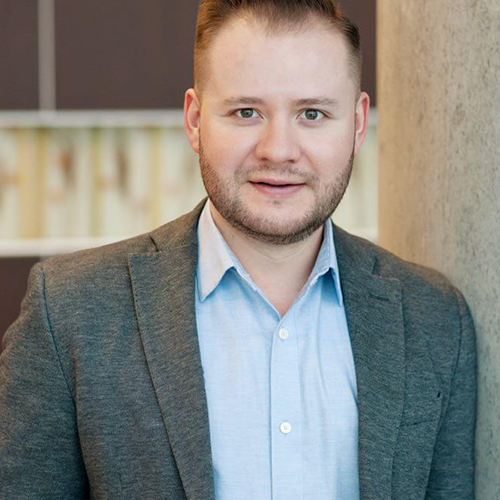
Dr. Felipe Nares
Neurosurgeon
Dr. Nares attended medical school at the University of Aguascalientes, He is trained to perform anterior and lateral approaches to the spine from the cervical to the lumbar spine, as well as minimally invasive surgery.

Dr. Luis A. Robles
Neurosurgeon
Dr. Luis Robles has been practicing neurosurgery specialty for 20 years. Dr. Robles is academically active, he participates as a section editor in the World Neurosurgery journal and he has published several articles in different neurosurgery international journals.

